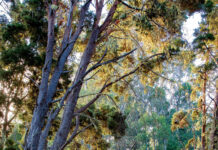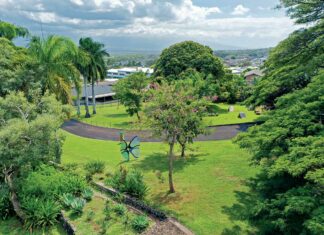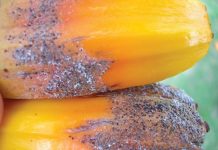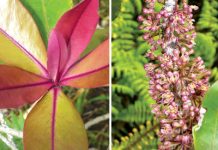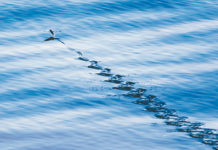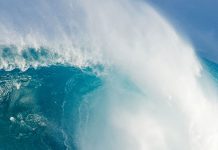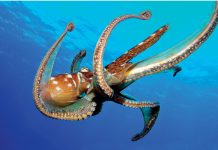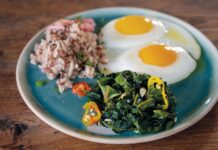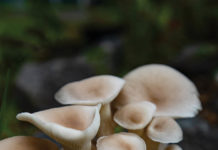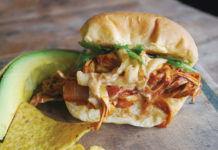Story by Shannon Wianecki
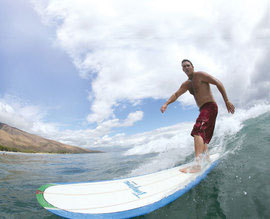 Winter surf in Hawai‘i may get the lion’s share of attention. From November to February, the north shore’s jaw-dropping walls of water can tower 20 feet and more, drawing crowds of pro surfers and spectators from around the globe. But summer’s no slouch for surfing, either. The sultry season doles out a steady supply of 2- to 3-footers perfect for hangin’ 5 . . . or 10, if you’re an expert. Along the coast of Maui, few things sing “summertime” more than the wide, rolling southern swells dotted with longboarders.
Winter surf in Hawai‘i may get the lion’s share of attention. From November to February, the north shore’s jaw-dropping walls of water can tower 20 feet and more, drawing crowds of pro surfers and spectators from around the globe. But summer’s no slouch for surfing, either. The sultry season doles out a steady supply of 2- to 3-footers perfect for hangin’ 5 . . . or 10, if you’re an expert. Along the coast of Maui, few things sing “summertime” more than the wide, rolling southern swells dotted with longboarders.
Longboarding is surfing’s oldest form. Ancient Hawaiian chiefs rode waves on olo, surfboards as long as 15 feet, carved from buoyant wili wili trees. Commoners rode slightly shorter boards, alaia, made of koa or ‘ulu planks. Historic records list 86 individually named surf breaks in Hawai‘i; today surfers flock to more than 1,700 spots statewide to practice this sport. While adrenaline junkies drop in on steep, high-stakes breaks like Bonzai Pipeline and Jaws, longboarders prefer to get their kicks the old-fashioned way: cruising on smaller waves with bigger boards. Old-fashioned is by no means boring—longboard masters often use their 10-foot-plus stage to perform sophisticated tricks. Nose riders “hang 10” by dangling their toes over the pointed, forward edge of their boards—at the risk of “pearling,” or tipping headfirst over the face of the wave. Classic longboarders stylishly “cross-step,” dancing up and down the length of their boards. The hotdoggers of the 1950s wowed the crowds at Waikiki by riding the surf while balanced in a headstand or carrying multiple passengers and pets!
Modern longboards, made of fiberglass or epoxy, are lighter than their carved wooden predecessors and much easier to maneuver. They are typically three feet taller than the surfer riding them. Perfect for beginners, the extra length allows you to catch smaller waves—not to mention lugging around a board that big forces you to build the upper body strength you’ll need later, when paddling out to a break. Some of the best longboard breaks are found on Maui at Ukumehame, Launiupoko, and Puamana Parks; and Lahaina Breakwall. So what are you waiting for? It’s summertime—surf’s up!


